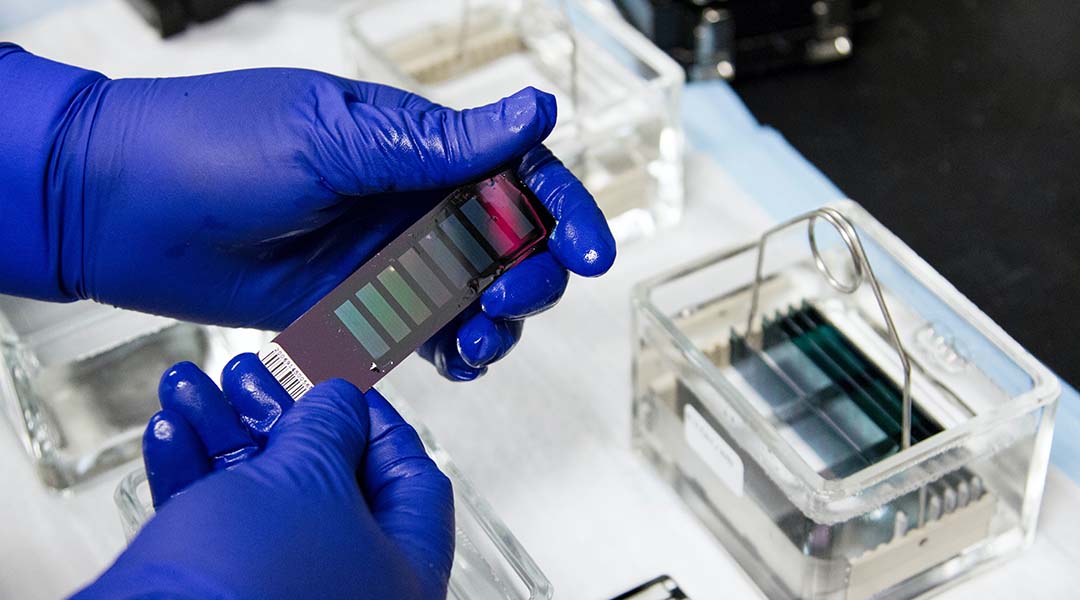The fight against cancer has taken on many forms. These approaches include treatments like chemotherapy, gene therapy, radiation therapy, and immunotherapy, to name a few, but cancer cells have proven to be quite resilient in the face of these methods.
Now, in a recent study, researchers are combining two known treatments into a promising new therapy.
A promising combination
A well-known chemotherapy drug called Olaparib shrinks tumors by killing cancer cells. However, cancer cells in the body are surrounded by a host of other cell types, all dedicated to promoting tumor growth and thwarting threats from anti-cancer therapies. These outer cells can significantly impede the success of Olaparib. On top of this, chemotherapy’s notorious side effects are partly caused by the indiscriminate killing of healthy cells.
The advent of the CRISPR/Cas9 system for gene editing has heralded an alternative strategy for tumor targeting — one that aims to personalize cancer therapy and minimize off-target effects.
The CRISPR/Cas9 system was originally extracted from bacteria and functions like a pair of molecular scissors. The complex consists of the Cas9 enzyme, which can cut into a cell’s genetic information, and a molecular tag which specifies the exact location where the genetic information should be altered. This allows researchers to add or delete sections of genetic information, at specific locations, in living systems.
In cancer treatment, genome editing has been used to alter genetic information to support and increase the treatment response against cancer cells. This is especially useful against cancers with a genetic basis, such as certain types of breast cancer caused by a mutation in the BRCA gene.
However, cancer cells are a challenging target for gene editing therapy. Classed as a complex disease, cancer doesn’t have just one single genetic origin, but is also influenced by environmental and lifestyle factors.
Looking for ways to harness the benefits of both these treatments, researchers have hit up the idea of combining the two.
Assembling the puzzle
A recent study in Advanced Science describes a strategy to inhibit breast cancer tumors using CRISPR/Cas9 linked to chemotherapy, in a special new formulation designed to address these challenges in tumor therapy.
Previous attempts at co-administering the CRISPR/Cas9 machinery with chemical drugs showed that separate formulations can lead to toxicity from the therapeutic combination, without noticeable positive additive effects. However, physically linking CRISPR/Cas9 to the Olaparib drug required careful consideration. As the two are very different and contain different elements, it is difficult for them to be packaged together.
This is where the nanocomplexes come in. Typically composed of multiple biological molecules packaged into a nano-sized complex, these are a commonly used tool to increase cell penetration. In this case, the nanocomplexes were formed by linking Cas9-Olaparib to a third molecule called polyethylenimine or PEI.
“When PEI is conjugated onto Cas9, effective delivery can be achieved with minimal toxicity,” explained Hyun Jung Chung, associate professor in the Department of Biological Sciences at the Korea Advanced Institute of Science and Technology (KAIST) and the study’s principle investigator, in an email. “The formation of nanocomplexes is required for effective delivery into cells. Without nanocomplex formation, the internalization into cells would not be possible.”
ComBiNE: A new hope for cancer treatment
The group named the resulting therapy “combinatorial and bioorthogonal nano-editing complex” or ComBiNE for short. When injected into the tumors of mice over the course of 24 days, ComBiNE was able to penetrate and kill cancer cells, successfully reducing tumor growth by 70% compared to untreated tumors. Control studies showed that the complex performed better than each of the components alone, underscoring the new system’s synergistic effects.
ComBiNE also showed promise in terms of side effects. “The formulation in our study has specificity for breast cancer cells with the BRCA mutation. The drug conjugated into the Cas9 protein (Olaparib) has an effect on these cancer cells, and not other normal cells,” said Chung.
The focus is now on optimizing ComBiNE for application in a clinical setting. “The conjugate system of CRISPR/Cas is advantageous in enabling effective delivery with only a minimal amount of carrier material, causing low toxicity,” explained Chung. “Although we demonstrated promising data for local delivery, we aim at further improving the technology to apply for systemic delivery.”
Not limited to the building blocks used in this study, ComBiNE can be created from a wide variety of molecules to address a range of human diseases, providing a versatile tool for further biopharmaceutical development and highlighting an exciting new anti-cancer approach.
Reference: Hee-Sung Park, Hyun Jung Chung, et al., Bioorthogonal CRISPR/Cas9-Drug Conjugate: A Combinatorial Nanomedicine Platform, Advanced Science (2023). DOI: 10.1002/advs.202302253
Feature image: The National Cancer Institute on Unsplash

















